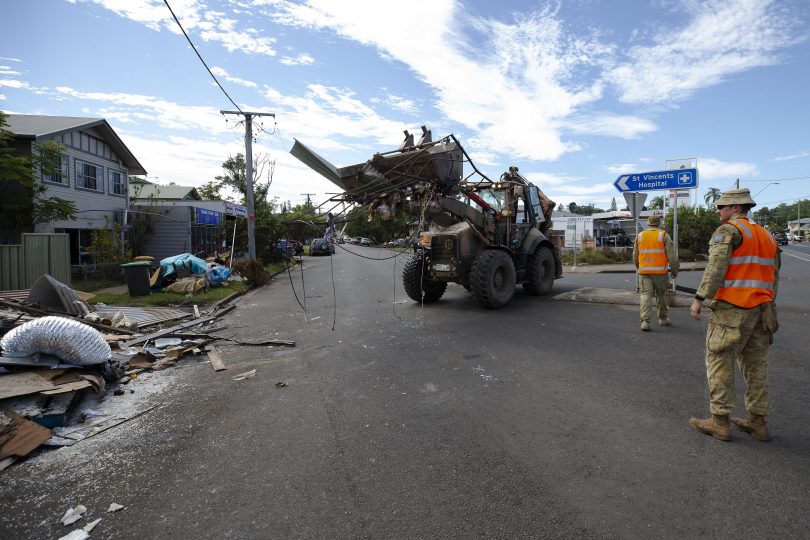
Australian Army sappers from 6th Engineer Support Regiment clear debris from a street in Lismore as part of Operation Flood Assist 2022. Photo: Defence.
It’s happening again. Not just the latest in the cavalcade of disasters raining down on Australia, but the tardy response that has left people feeling abandoned by their governments.
Prime Minister Scott Morrison walked into the lion’s den of Lismore this week, away from the cameras to avoid any repeat of the Cobargo bushfire debacle, and tried to calm the troubled waters, repeatedly praising the heroic community craft response which defied orders to stay away and rescued stranded flood victims.
There is palpable anger in the flooded north mirroring that which still persists in bushfire affected areas such as the South Coast.
The story is familiar. A region is overwhelmed by a natural disaster unlike any it has seen before, cue climate change, and it is left to its own devices for days before serious help arrives as local emergency services find they are way out of their depth.
The Dunkirk spirit gets people through but they are left exhausted, angry, and looking for someone to blame.
The buck, as ever, stops with the PM. Unjustified though some of the criticism may be, he can’t seem to get the messaging right or strike the right tone, despite the fistful of dollars he brings.
He talks of unrealistic expectations, unprecedented disasters that couldn’t be foretold, state responsibilities and how government can’t solve everybody’s economic problems.
He admits the climate has changed and Australia is getting harder to live in.
But the inertia, blame-shifting and resistance to accepting that the way Australia has coped with its already extreme environment is no longer viable is telling.
It may be the final nail in his electoral coffin.
The fragmented, reactive approach that has characterised the bushfire and flood catastrophes has been a function of the state-federal division of responsibilities and its accompanying tensions.
But there has also been a lack of risk management, for example, poor town planning and development decisions, inaction on mitigation measures and a seeming inability to be prescient enough about events to enact disaster plans and deploy resources.
The Northern Rivers flood disaster was eminently predictable based on what the same weather system unleashed on south-east Queensland, and during the bushfires it took catastrophe after catastrophe before the Federal Government acted and brought the military into play.
Where was the army in Lismore, the Richmond Valley, Mullumbimby and Murwillumbah when disaster struck, many flood victims have said.
Well, the federal government has deployed thousands of troops in the flood-hit areas but the situation raises the question whether the Australian Defence Force should be the key disaster response and relief organisation.
It does a great job once the orders go out and the machine starts rolling but is it the agile, rapid response force that is needed, and will such responsibilities dilute its main military mission to defend the country?
And not everyone is comfortable with troops in the streets.
What may be required is a new overarching national agency that coordinates all resources from weather forecasting and modelling to actual boots on the ground or boats in the water, to mobile communications and command centres.
It would also need to be fully equipped and have the necessary logistics capability, with strategically located hubs from which initial disaster responses and ongoing relief can be launched.
Some will baulk at the cost but considering the billions being spent on some dubious military acquisitions and the amounts that will be thrown at marginal seats and selected segments of the electorate soon, it would be money well spent if the current failing ad hoc arrangement of disaster response is upgraded to the level the new paradigm is demanding.
The PM is right that the community would not want to, or even could be, excluded from involving itself in the response. It is a natural human reflex to come to each other’s aid in a crisis.
And that will continue. But the nation can’t go on as it is, reeling from one disaster to the next.





















